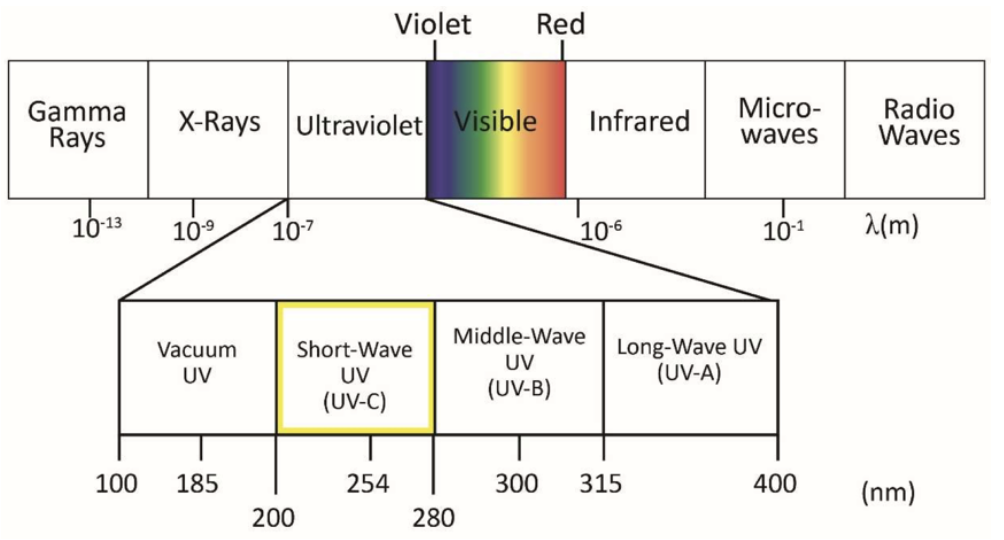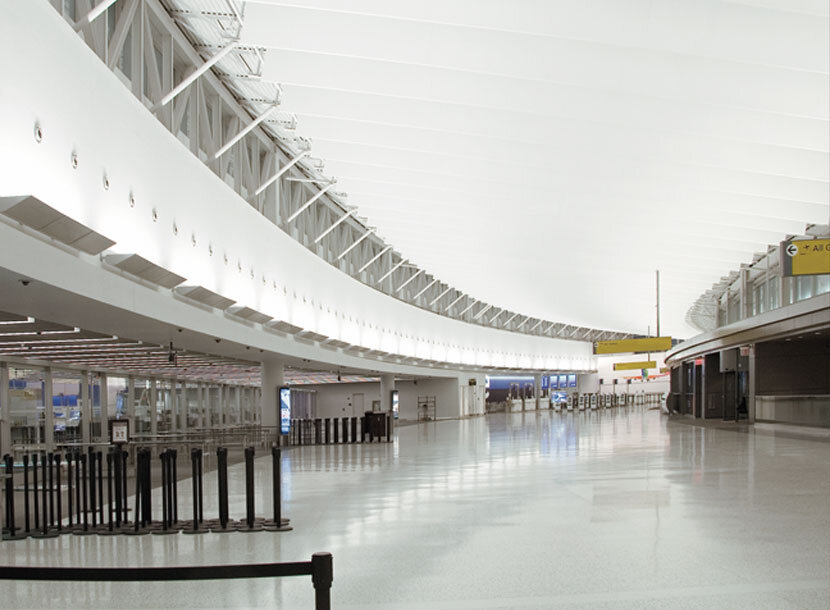How to Specify Germicidal UVC Light
Challenges of COVID-19
Our society is facing an unprecedented challenge to overcome. At the time of this writing, the United States is leading the world in both infections and deaths. The stakes are so high; every industry should be thinking about how it can contribute to the fight to reduce the transmission of COVID-19.
Response Demanded of The Lighting Industry
Class A real estate is expensive. It's even more costly if workers are afraid to go to it. While the coronavirus crisis has proven just how much we can get done remotely, it's also reiterated the value of working and learning together. Making our offices, healthcare spaces, schools, and scores of other environments safer and healthier is possible, and the best buildings and companies will invest in the methods to make it happen. The lighting industry is ready to help make our interior spaces healthier. Here’s how…
Germicidal UV
A Science-Backed Solution to Deactivate SARS-CoV-2
Germicidal UV light has been in practice for decades and has found new prominence since the outbreak of COVID-19. We now know that radiation in the UV-C band can deactivate the virus within minutes, as long as proper dosing is applied. When combined with other disinfection methods, UV light can decrease the likelihood of viral spread within enclosed spaces. What follows is a summary of the science by UV-C, you can read the IES report on the science behind UV-C for more information.
UV-C Only
There are many lighting products on the market deemed "disinfecting" units by marketing teams. Light in the visible spectrum, as well as UV-A and UV-B, are ineffective at deactivating SARS-CoV2, or any other virus.
Safety Considerations
There are best practices to heed when utilizing UV-C light. UV-C is considered relatively safe for human skin as it has been shown not to penetrate any deeper than surface-level "dead" skin cells. That said, short term injury similar to sunburn is possible if skin is over exposed. Therefore, UV-C should not be used to disinfect hands.
UV-C carries the risk of significant, but temporary damage to the human eye. Our eyes will suffer injury if directly exposed to UV-C radiation, specifically cornea damage. As a result, UV-C must be kept out of the direct line of sight.
Methods of Implementation
UV-C is already integrated into many HVAC systems. This solution helps locally disinfect the HVAC unit itself but does not distribute disinfected air within the space in a timely fashion. There are currently three safe ways to implement G-UV light in the built environment that can enhance disinfection efforts and make these spaces safer for their occupants.
Method 1: Upper Air UV-C
Upper-Air GUV is a method of deploying UV-C radiation above sightlines disinfecting the upper third of the air in a space. For this to work correctly, two factors in addition to UV-C dosing are critical. The first is natural convection created by the heat created by people, computers, and other equipment causing the air to rise. That convection, combined with proper HVAC ventilation securing a minimum of 6 air exchanges per hour moves the disinfected air through the space delivering it to occupants regularly.
Recommended System Design
Utilizing linear direct/indirect pendant lighting is the easiest way to implement upper-air GUV. The "downlight" portion of the pendant will deliver normal white light to illuminate the space. The part of the fixture that would typically provide indirect white light for soft ambient light is replaced with UV-C producing LEDs. The spacing of these GUV fixtures will vary depending on the size of the room and should be coordinated in concert with the HVAC system of the building to ensure proper airflow. These units should be on throughout the time the area is occupied.
Design Safety Requirements
Fixtures must be hung above 7ft from the finished floor to ensure no one
can accidentally look directly into the UV source. Any spaces with possible viewing angles from above from staircases or other features should not implement upper-air GUV. Fixtures must be installed with a safety sensor to turn UV lights off if anyone comes above the top of the lighting fixtures.
Product Example: LS Series Coronet
The LS series from Coronet is available today with UV-C engines. These fixtures are available within Coronet's standard lead times and can quickly deploy upper-air GUV. The design team at Coronet is committed to having safe, well-designed installations. As such, we’re not publishing cut sheets for mass download. However, email me, and we can discuss your application, and we can work through the next steps.
Method 2: UV-C Task Lighting
A secondary vector for transmission is via common-touch surfaces. With unassigned workstations more and more the norm, more work surfaces are shared and, therefore, a possible vector for pathogen transmission. Using high-quality task lighting that deploys GUV allows for the intermittent disinfection of work surfaces and provides a high level of disinfection certainty when compared to manual disinfection routines.
Implementation
Regularly spaced task lights positioned at shared work surfaces will deploy UV effectively across the work surface, ensuring rapid disinfection.
Safety Controls Required
The most crucial aspect of implementing GUV in task lighting is the use of sensors and timers as safety measures. As previously mentioned, UV-C radiation is relatively safe for human skin, but prolonged exposure is not recommended. It is strongly encouraged that the UV portion of these fixtures
is activated via vacancy sensors and further managed with timers.
Product Example: Tambient G305
Tambient (a division of The Lighting Quotient) has been making task/ambient lighting fixtures for decades. These units are easily customizable to any office furniture system and can operate as a standard task/ambient luminaire and switch to GUV mode when the area is unoccupied. You can learn more about the G305 by reading here or emailing me.
Method 3: GUV Tower
Mobile GUV towers have been available for a long time and have been proven effective in healthcare environments such as surgical suites and ICUs. To disinfect a space, a tower is moved in when unoccupied to dose the entire area with UV-C radiation for a set amount of time.
Implementation
GUV towers are straightforward devices that provide 360-degree wrap-around coverage of UV- C radiation. The only real variable is the size of the space. The larger the room or area, the longer the tower will need to be on to properly dose the area with enough UV-C to disinfect the space.
Training and Safety
Above all, proper training of the maintenance and cleaning teams who will operate these towers is the most critical aspect of proper implementation. These towers can only be used in unoccupied spaces, and it is required that these spaces be properly vacated and locked down to disinfect safely.
Product Example: Safeology Tower
The Safeology UVC tower goes beyond a simple UV-C tower. Using advanced technology, Safeology is your partner in making your spaces safer.
Computer-Aided Modeling
Effective disinfection requires utilizing the correct dosage of UVC light, which is determined by the size of the space and the intensity and duration of UVC emittance needed to inactivate pathogens.
Cloud-Based Management
Safeology’s IoT integration collects important data using the systems that can be accessed anywhere at any time via the Cloud, providing you the information necessary to optimize the safe and effective use of the Safeology Tower.
Mobile Application Operations
Each Safeology UVC Tower comes with a mobile device pre-loaded with the Safeology custom app. Designed for ease of use, the app helps administrators and operators quickly and easily create accounts, set up equipment, establish cleaning parameters, program cleaning cycles, manage the Tower fleet, and operate individual Towers.
If you missed the presentation and would like to schedule another, use the tool below.














